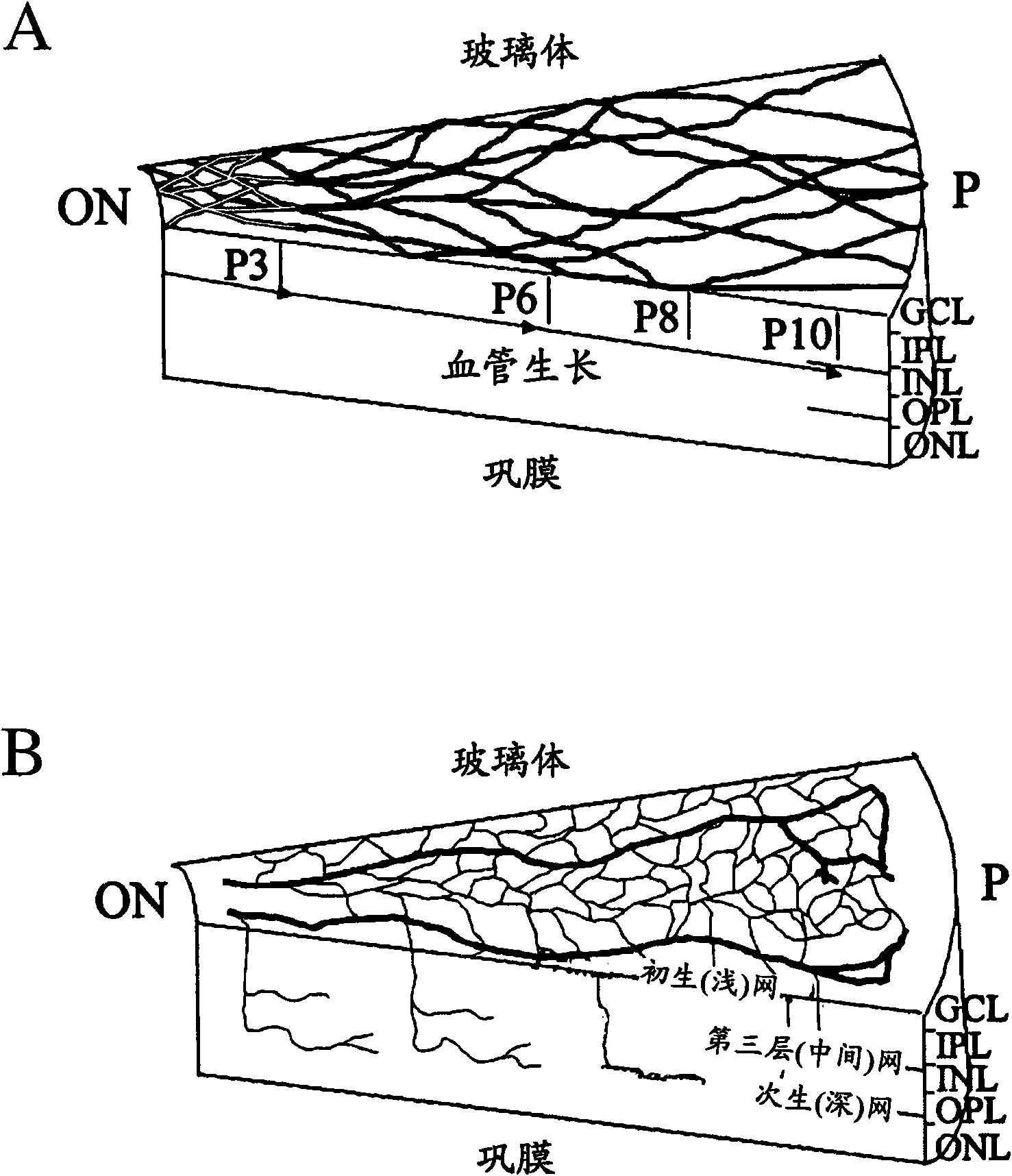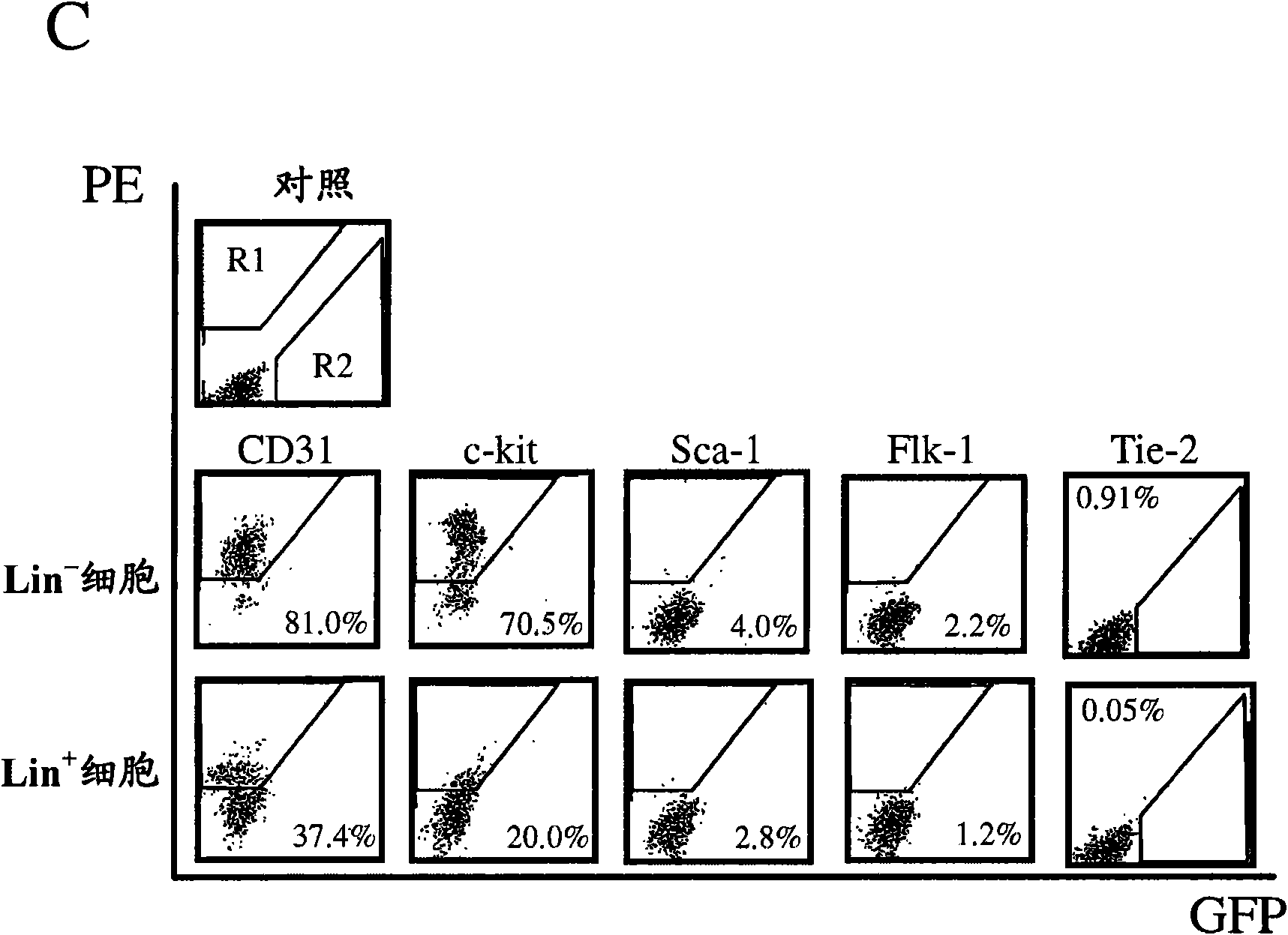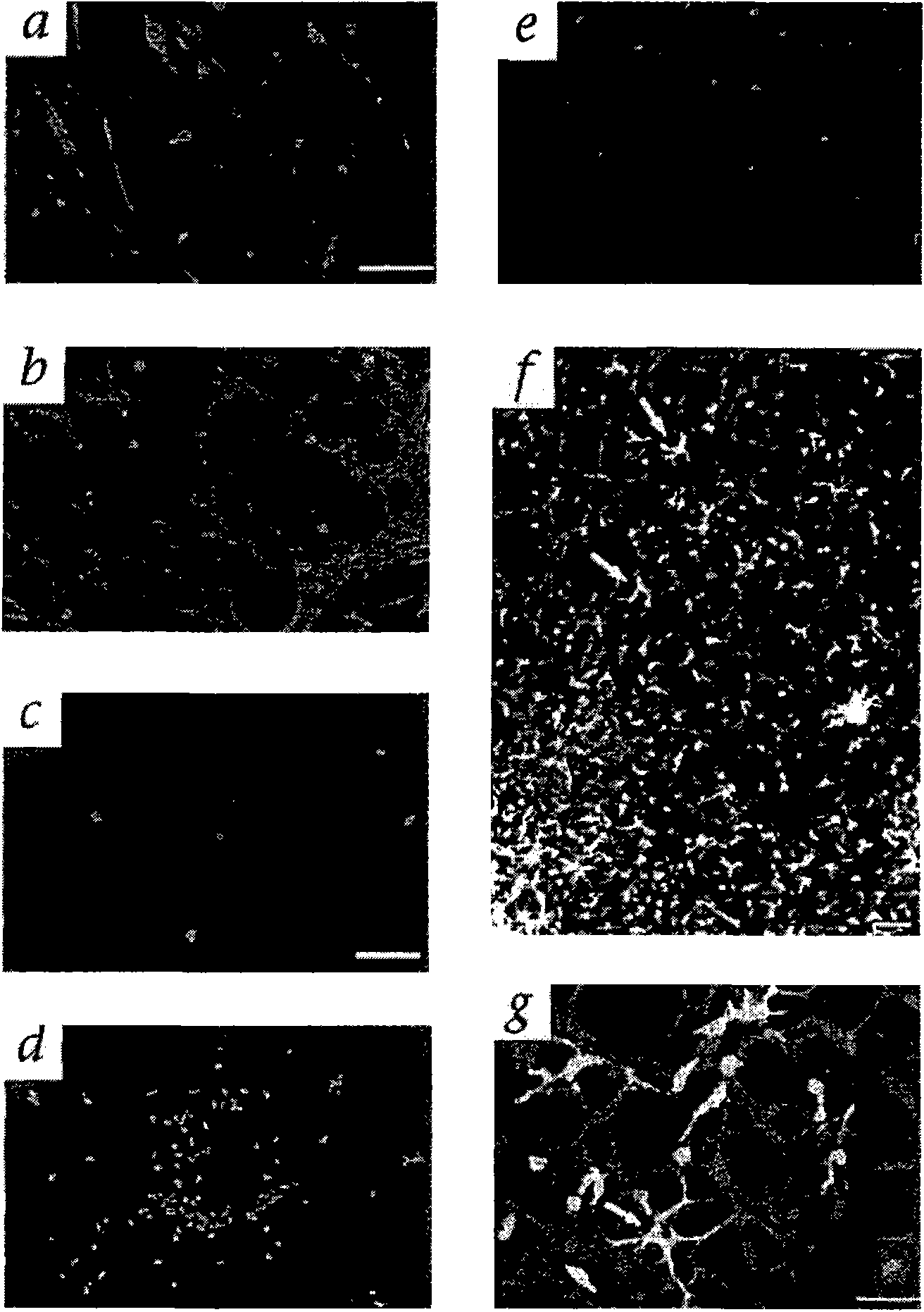Isolated myeloid-like cell populations and methods of treatment therewith
A technology of cell populations and bone marrow cells, applied in the field of isolated mammalian cells, can solve problems such as undetermined cell numbers and unclear mechanisms
- Summary
- Abstract
- Description
- Claims
- Application Information
AI Technical Summary
Problems solved by technology
Method used
Image
Examples
Embodiment 1
[0163] Example 1. Cell Separation and Enrichment; Mouse Lin - Preparation of HSC populations A and B.
[0164]general method. All in vivo evaluations were carried out in accordance with the NIH Guide for the Care and Use of Laboratory Animals (NIH Guide for the Care and Use of Laboratory Animals), and all evaluation methods were approved by The Scripps Research Institute (TSRI, La Jolla, CA). ) Animal Care and Use Committee (Animal Care and Use Committee) approval. Bone marrow cells were extracted from B6.129S7-Gtrosa26, Tie-2GFP, ACTbEGFP, FVB / NJ (rd / rd mice) or Balb / cBYJ adult mice (The Jackson Laboratory, ME).
[0165] then use A water-soluble Ficoll gradient (Sigma, St. Louis, MO), separated by density gradient, was used to isolate mononuclear cells, which were treated with biotin-conjugated lineage group antibodies (CD45, CD3, Ly-6G, CD11, TER-119, Pharmingen, San Diego, CA) labeled Lin for mice - filter. Using a magnetic separation device (AUTOMACS TM sorter, Mil...
Embodiment 2
[0171] Example 2. Intravitreal administration of cells in a murine model.
[0172] Eyelid clefts were cut on the eyelids of the mice with a fine blade to expose the eyeballs from P2 to P6. Then, using a No. 33 (Hamilton, Reno, NV) syringe with a needle, the lineage-negative HSC A population of the present invention (about 0.5 μl to about 1 μl of cell culture medium) was injected with about 10 5 cells) injected into the vitreous cavity.
Embodiment 3
[0173] Example 3. EPC transfection.
[0174] According to the manufacturer's protocol, use FuGENE TM 6 transfection reagent (Roche, Indianapolis, IN), mouse Lin - HSC (group A) also appends His with the T2 fragment encoding TrpRS 6 Tagged DNA (SEQ ID NO: 1, Figure 7 ) transfection. Will Lin - HSC cells (about 10 6 cells / ml) were suspended in OPTI- medium (Invitrogen, Carlsbad, CA). A mixture of DNA (about 1 μg) and FuGENE reagent (about 3 μl) was then added and the mixture was incubated at about 37° C. for about 18 hours. After incubation, cells were washed and harvested. The transfection efficiency of this system was approximately 17%, as confirmed by FACS analysis. Production of T2-TrpRS was confirmed by Western blotting. Add His 6 For the amino acid sequence of the T2-TrpRS tag, see Figure 8 SEQ ID NO: 2 in.
PUM
 Login to View More
Login to View More Abstract
Description
Claims
Application Information
 Login to View More
Login to View More - Generate Ideas
- Intellectual Property
- Life Sciences
- Materials
- Tech Scout
- Unparalleled Data Quality
- Higher Quality Content
- 60% Fewer Hallucinations
Browse by: Latest US Patents, China's latest patents, Technical Efficacy Thesaurus, Application Domain, Technology Topic, Popular Technical Reports.
© 2025 PatSnap. All rights reserved.Legal|Privacy policy|Modern Slavery Act Transparency Statement|Sitemap|About US| Contact US: help@patsnap.com



